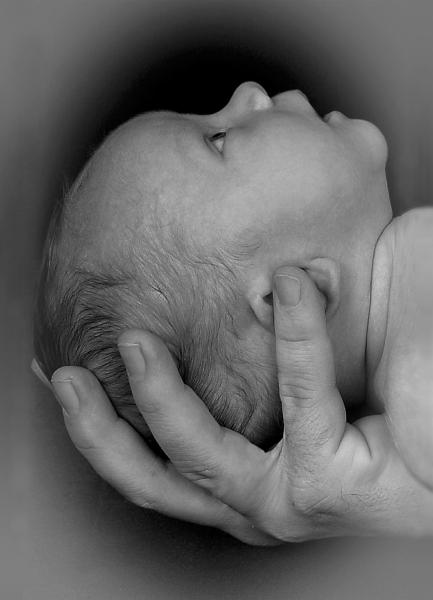A new study presented by co-author Eyal Sheiner, MD, PhD, chair of the Obstetrics and Gynecology Department at Soroka University Medical Center, Be'er-Sheva, Israel last month at the Society for Maternal-Fetal Medicine's 39th Annual Pregnancy Meeting in Las Vegas, Nevada maintains babies born outside of the hospital are three times more likely to die than those born in one. This work builds upon what we already know, that the hospital is the safest environment to reduce the possibility of short- or long-term disability and death.
The American College of Obstetricians and Gynecologists (ACOG) reports the number of home births in the United States to be about 35,000 (0.9%) births per year, with roughly a quarter of those unplanned or unattended. They note
“Women inquiring about planned home birth should be informed of its risks and benefits based on recent evidence. Specifically, they should be informed that although planned home birth is associated with fewer maternal interventions than planned hospital birth, it also is associated with a more than twofold increased risk of perinatal death (1-2 in 1000) and a threefold increased risk of neonatal seizures or serious neurologic dysfunction (0.4-0.6 in 1000).”
ACOG’s committee position statement details the limited high quality evidence available regarding planned home births and the various challenges to obtaining such data. But, they amplify their message that
“Although the American College of Obstetricians and Gynecologists believes that hospitals and accredited birth centers are the safest settings for birth, each woman has the right to make a medically informed decision about delivery. Importantly, women should be informed that several factors are critical to reducing perinatal mortality rates and achieving favorable home birth outcomes. These factors include the appropriate selection of candidates for home birth; the availability of a certified nurse–midwife, certified midwife or midwife whose education and licensure meet International Confederation of Midwives’ Global Standards for Midwifery Education, or physician practicing obstetrics within an integrated and regulated health system; ready access to consultation; and access to safe and timely transport to nearby hospitals. The Committee on Obstetric Practice considers fetal malpresentation, multiple gestation, or prior cesarean delivery to be an absolute contraindication to planned home birth.”
What does this all mean?
Here’s the deal. When it comes to childbirth, fortunately most situations yield a healthy mother and healthy baby. But, when things go awry in this arena it tends to happen precipitously. In these cases, any delays or lack of expertise can lead to profound short- and long-term disability, even death. Having every piece of equipment at the ready at the hands of experienced and seasoned health professionals to rescue a distressed mother or infant by emergent c-section, for example, changes the game entirely. Every second counts for an infant’s brain when enduring oxygen deprivation. Waiting for a hospital transfer without necessary interventions available can literally change the course of lives. Not monitoring vital signs of mom and baby in real time during the perinatal period can miss any number of opportunities to capture an evolving issue that when caught early is reversible. But, when unnoticed potentially catastrophic (and at that point irreversible).
The stakes are too high to add a risk factor or hurdle to childbirth.
It is a double-edged sword to be alive now. We have witnessed incredible modern medical advances and benefited from them. While at the same time, this progress has prompted societal amnesia surrounding how high maternal and infant mortality rates once were. The same can be said for our current issues with vaccination rates.
As per ACOG, it is clear that there will always be those who want to deliver at home and it is their right to do so. Taking actionable precautions to lower risk in planned home birth through optimizing candidate selection, hospital transfer speed and ease of access to specialty care, insisting on attended birth by trained staff and so on are worthwhile recommendations. If this is the step a family takes, then being fully informed about the endeavor is essential for true consent - and eliminating some risks is better than none at all.
The key component is fully informed consent.
Many believe today that the most natural experience there is, childbirth, has become too medicalized. This is a very valid point. The good news is there are options. There are birthing centers within hospitals that offer an alternative for those at low risk with uneventful pregnancies. And, even though no birth is entirely without risk, should an issue arise there is immediate well-informed and well-equipped help in close proximity.
The bad news is for this segment of the population this is manifesting in home births and water births (1), for example, along with ill-conceived notions of delaying labor as long as possible and against medical advice (read here about those pushing “overdue” birth). And for those most adamant about avoiding the hospital or intervention, “free birth,” “unhindered birth” and “unassisted birth” go a step further to exclude a trained professional from being present at all during the actual experience of delivery (read here).
Debunking the many myths that abound on these subjects is crucial to promoting the safest paths for mother and child. A healthy mom and healthy baby should be the goal of any delivery.
Note(s):
(1) To read more comprehensive pieces on the dangers of water birth, review these articles:




